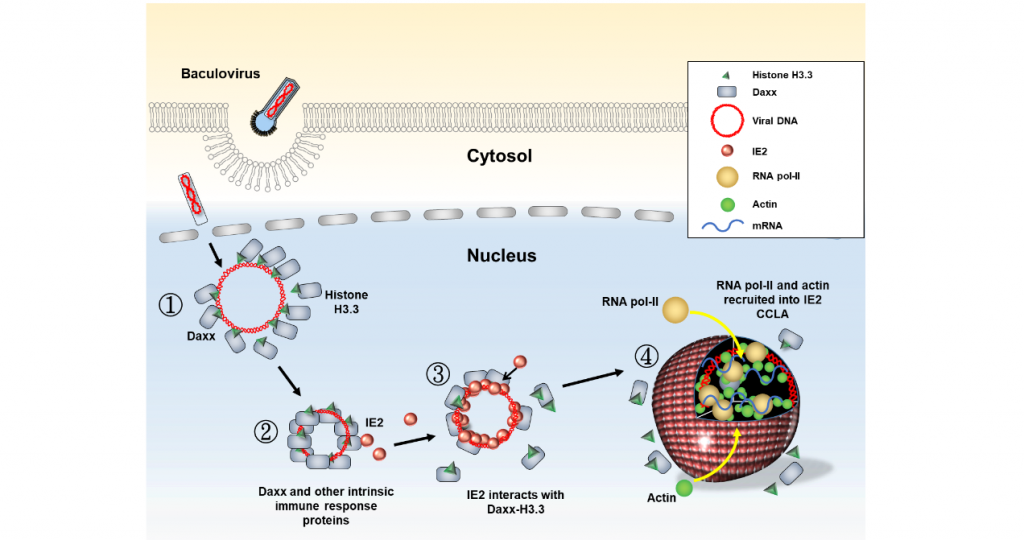It is little known about how a cell senses the invading foreign DNA inside the nucleus. The group of Dr. Yu-Chan Chao, from Institute of Molecular Biology, Academia Sinica, found that upon baculovirus transduction into the cell, the invading viral DNA is trapped by the cellular death domain-associated protein (Daxx) and histone H3.3 in the nucleus, resulting in the gene inactivation. IE2, a baculovirus transactivator, targets Daxx and H3.3 to dismiss their repression effect, and likewise access the viral DNA. IE2 then forms a unique nuclear body structure, which we termed the clathrate cage-like apparatus (CCLAs). CCLAs allow IE2 to actively recruit cellular factors required for transactivation, including actin and RNA polymerase II, and to synthesize abundant mRNAs which later migrate from CCLAs to the cytosol for high-level gene expression. The result was published in Journal of virology.
Article Link:https://jvi.asm.org/content/93/8/e00149-19

